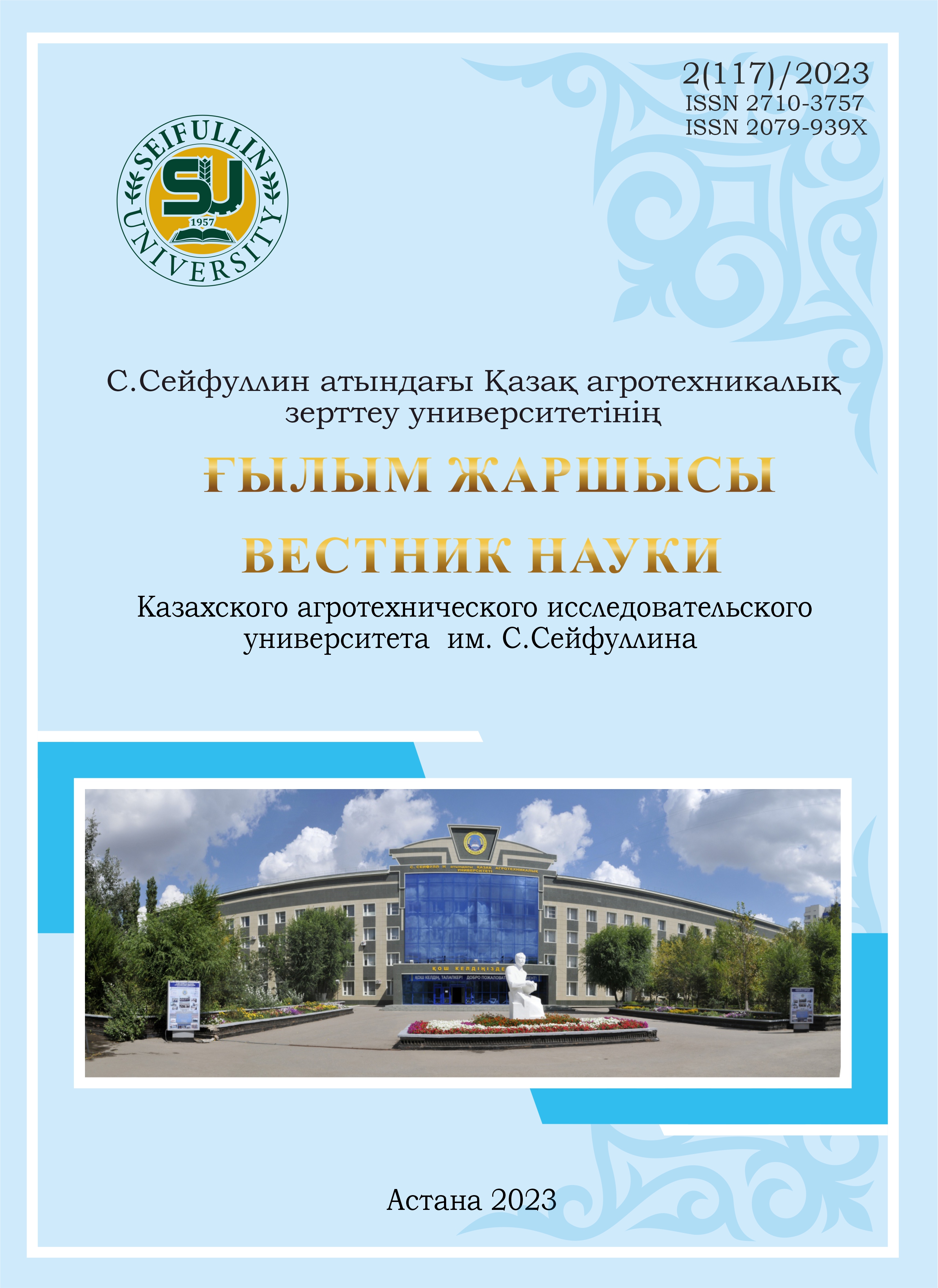MORPHOBIOLOGICAL EVALUATION OF SOYBEAN VARIETIES OF DIFFERENT ORIGIN IN THE CONDITIONS OF NORTHERN KAZAKHSTAN
DOI:
https://doi.org/10.51452/kazatu.2023.2(117).1371Keywords:
soybean; variety; yield; protein; fat; growing season; breeding.Abstract
Soybean is a new, previously uncultivated and promising crop for Northern Kazakhstan. The crop is difficult to cultivate due to the climatic features of our country, however, it is in demand and promises farmers high profitability. However, due to climatic conditions, the choice of soybean varieties or hybrids in Kazakhstan, unlike in other regions, is small. For the first time in the conditions of Northern Kazakhstan, soybean varieties of various origins were screened for the content of pigments in the leaves, and their relationship in the formation of economically valuable traits and yields was determined. The significance of the indicators in the formation of high yields and the effect of the accumulation of pigments on their level is determined.The content of pigments and carotenoids in the leaves of soybean varieties showed their variability depending on the phases of development and varietal characteristics. The early-maturing group of varieties considered in the studies was characterized by an increase in the content of pigments and carotenoids in the first phase of development, the peak of increase is noted in the flowering phase of the culture. The following varieties turned out to be productive and precocious: Heihe 43, Chera 1, Svetlyachek, Heihe 33, Nur+ and promising line № 73.

